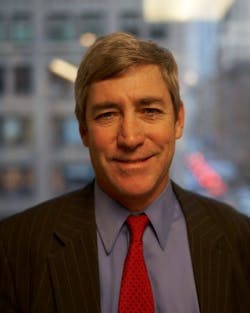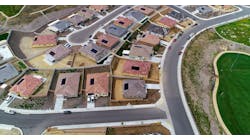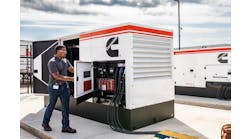California’s First-of-a-Kind Microgrid for Wastewater Treatment
Mike Byrnes, senior vice president of Veolia North America and CEO of SourceOne, Veolia’s energy consulting company, discusses an innovative California microgrid project bringing energy independence, greater resiliency and efficiency for Rialto’s wastewater treatment plant.
Growing numbers of climate change-linked natural disasters, such as heat waves and wildfires, are leading to widespread power outages and brownouts. This is making energy resilience more important than ever, and it is especially pertinent for wastewater treatment plants. For these sites, a power supply disruption can be catastrophic, leading to environmentally damaging spills and negative impacts on natural habitats and human health.
Rialto Water Services in California plans to mitigate these risks with a microgrid. Working with Veolia North America, which operates and maintains the plant on behalf of the city, a unique combination of biogas cogeneration, solar power and backup battery storage will be designed and installed to supply electricity to the city’s wastewater treatment plant. This first-of-a-kind installation in California will equip Rialto’s wastewater treatment system with energy independence, resilience and efficiency. It is also expected to save in excess of $300,000 per year in energy costs.
Innovative funding of microgrid
On completion, this microgrid project is expected to cost around $8 million, funded by a visionary concession arrangement without any tax increases for the community. This has been achieved through a 30-year public private partnership, established to improve operation of Rialto’s water and wastewater system and raise capital from equity partners and capital finance markets. Initial funding from the agreement allowed the city to invest in necessary capital improvements and set aside funding for deferred utility system lease payments and strategic reserve funds.
With initial improvements now complete, this microgrid represents the first in a series of forward-thinking projects supporting the city’s commitment to innovation and sustainability.
Microgrid protects fish
The microgrid will also play a part in protecting the natural environment of Rialto, specifically a population of endangered Santa Ana suckerfish that reside in a waterway close to the wastewater treatment plant. Power outages could lead to unplanned wastewater releases into this waterway, putting these fish at risk. With the microgrid in place, the plant will have the ability to continue operations during grid power outages, preventing releases.
The first feasibility phase for the microgrid project has now been completed, and the Rialto City Council has voted to go ahead with the second phase of designing the microgrid, which is expected to be installed and operating by 2024.
This innovative project is putting Rialto in a strong position to meet its energy independence and sustainability goals. It is also preparing the city for future environmental and economic challenges as well as paving the way for a green future.
Mike Byrnes is senior vice president of Veolia North America and chief operating officer of SourceOne, Veolia’s energy consulting company.







